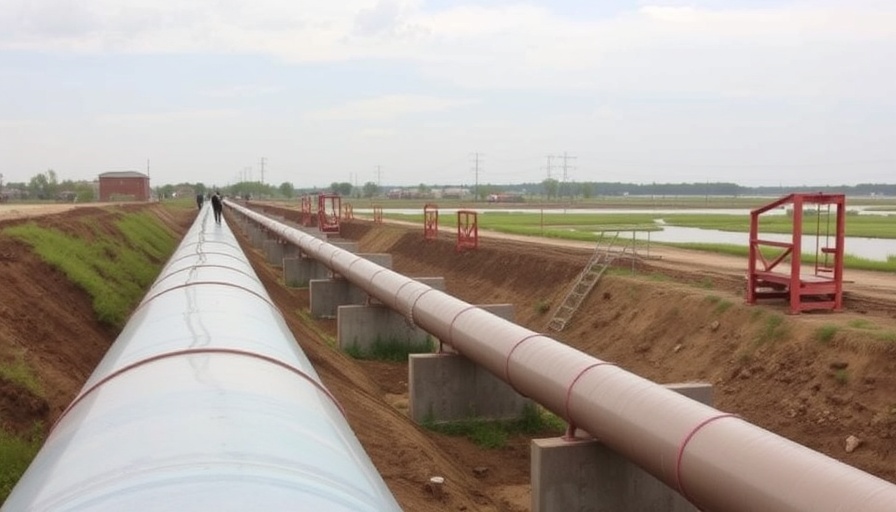
Chicago's Water Pipeline Project: A Community Lifeline
A recent initiative is set to transform the access suburban communities have to potable water. An ambitious $1.45 billion pipeline project aims to connect South Suburban municipalities to the abundant water supply of Chicago. The aim is not just about delivering water; it’s about enhancing the quality of life and ensuring sustainability for local families and businesses.
Why This Project Matters
Access to clean drinking water is a fundamental need that affects health, economic growth, and overall community well-being. For many suburban areas around Chicago, reliance on wells or decay-prone systems has created concerns about water safety and quality. The new pipeline will deliver treated Chicago water, known for its compliance with stringent EPA standards, thereby nurturing a more robust public health environment.
Historical Context: Suburbia’s Water Struggles
Historically, many suburbs around Chicago have faced challenges regarding water security. The advent of the extensive pipeline brings much-needed relief to areas that have relied heavily on deteriorating infrastructure or limited well-water supplies. This project could not only eliminate those concerns but could also foster economic development by attracting businesses looking for a reliable water source.
The Environmental Benefits
By linking suburban towns to Chicago’s water system, the project promises to reduce reliance on inefficient and often contaminated local sources. This strategic choice not only optimizes water distribution but also leverages advanced technology employed by Chicago city planners. Lowering the environmental footprint through modern supply methodologies can inspire similar projects across the nation.
Community Input and Engagement
As plans for the pipeline progress, community engagement will be vital. Public forums and informational sessions have been critical in integrating community feedback into project designs. This interactive approach ensures that the needs and concerns of residents are prioritized, all while enriching the sense of stewardship among community members over their water resources.
Future Predictions: Scaling Up for All
This pipeline project is more than just an infrastructure job; it symbolizes a paradigm shift in how communities prioritize and manage water access. Looking forward, this project could serve as a prototype for future water infrastructure projects across the Midwest and beyond, creating pathways for sustainable water management practices.
Potential Challenges and Concerns
Despite its promise, the project isn't without challenges. Concerns over cost overruns, potential environmental impact during construction, and logistical hurdles are among the issues that residents and planners alike are watching closely. Robust planning and transparent communication will be key to overcoming these barriers.
Take Action on the Water Crisis
As this project moves forward, it’s essential for community members to stay engaged and informed. Ensure that your voice is heard by participating in public meetings, providing input during discussions, and advocating for responsible water use and conservation practices. Our communities thrive when we take an active role in shaping the future of our shared resources.
In summary, the $1.45 billion Chicago pipeline project is not just an investment in infrastructure, it is an investment in the health, security, and prosperity of surrounding communities. By ensuring access to reliable, clean water for suburban families, we help foster a more equitable and sustainable future.
 Add Row
Add Row  Add
Add 




Write A Comment